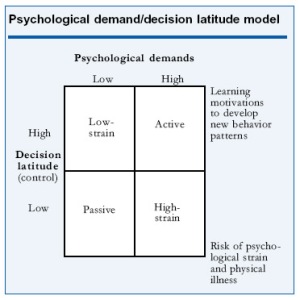The deadline for the assignment is getting closer. Words cannot come to your head. You feel like your brain has been drained. You cannot help to distract yourself with FACEBOOK. It seems like Rita has not wasted her time and purchase some new pair of tits and big round ass! I wonder, how can she….? Maybe I should ask my dad for some of those for my birthday (Giggles).You look at the time, it nearly 3:15pm. Great! You really did it this time! Deadline is in approximate in 1hr 45 minutes. You manage have wasted an hour of your time looking at pictures of those BOUNCING BETTIES and that VOLUPTOUS JLO ASS! You start to feel anxieties, nervousness, pain in the chest…In that moment you realise you are under STRESS!
Researchers have defined stress “as state in which individuals are faced with the need to make difficult or undesirable changes in order to adapt to events and situations in their lives” (click here). The changes in the demands of the woman’s role in today’s society has substantially increased the rates of stress. The Health and Safety Executive organization found out that overall there is an estimate of 400,000 out of 1, 152,000 cases that are related to stress in Great Britain. Although some people would think that male have higher levels of stress, figures have proved differently. Females have shown higher rates of stress than men with an approximate of 125,000 female cases over the 86,000 male cases (click here) in the United Kingdom. Moreover, the American Psychological Association reported that overall women suffer of more stress than men by 8%; woman are expected to have physical and emotional symptoms than men by 11% and that woman would stress more about economic issues than men by 7% (click here).
The new role of woman has implied new challenges, concerns and responsibilities in their lives. There are higher expectations in the achievement of success, not only in their personal life but on the academic and work fields, as woman are trying to position as a stronger individual in society. Stress can be related to perception of the individual. Butler (1993) pointed out that stress can rise when the demands seem to exceed the resources in the eyes of the individual (click here).Woman can perceived differently the difficulty of tasks according to their personal knowledge and their range of abilities. An activity that can cause stress to a woman might be a pleasurable task to another. There are some woman that seem to find numbers stressful while others find it enjoyable and easy. Mosher (1998) stated that perception does not only involve the collection of data into our system, but it is related to the interpretation that we give to that data based on our previous experiences (click here).
According to a study conducted by Agolla and Ongori (2009), stress can be the result of academic overload, low motivation in students, poor academic performance and the uncertainty of what the future holds for them (click here). Nowadays, students are not only concerned about their academic performance but they have to balance their student life with work in order to afford their expenses. The National Restaurant Association in the United States found out that 28% of their employees were under the age of 20 (click here ). Globalization has implied the merge of economies which has led to high competitiveness in the labour market. In today’s work framework, organizations need employees who have wider knowledge and have the capacity to apply learning and adapt to the constant changes which they are exposed to. The fact that a student goes to university does not guarantee that they will get a job. This is causing stress and concern amongst undergraduate students who find it hard to feel motivated.
Stress does not only have an effect on the individual but also on organizations in terms of productivity and performance. Studies have shown that stress can generate economic losses to businesses. The cost of work-related stress in 2007-2008 was approximately £4 billion each year (click here). This cost can be translated into absenteeism, turnovers, resignation, work related accidents, sickness and impaired decision making. Stress at work can develop for several reasons. Subbulaxmi, et.al (2002) points out that “the psychological sources of stress may be due to a particular situation such as boring job, inability to socialize, and lack of autonomy, responsibility of results, no sufficient authority, unrealistic objectives, role ambiguity, role conflict and dual career marriages” (click here) . The Psychological demand/decision latitude Model describes two dimensions and four work environments. The first one describes that the employee needs certain skills and to keep a constant intense work with their colleagues; and the second relates to the degree of freedom and creativity that the employee has to make their own decisions. In the chart below you can see that the most adverse work environment is the high strain where there are high psychology demands in the job and there is low decision latitude (click here). The higher implications have caught the attention of organizations who are constantly doing surveys and interventions to reduce the stress at work by doing job rotations or giving more challenges and freedom in decision-making.`
The best way to avoid stress is to learn to manage our time. Time management allows us to relax and still be able to do the do the activities we enjoy the most. However, if you get caught up by stress, you should do activities that you will find inner peace such as Yoga or Pilates. Personally if I get caught up on stress, an effective way I found to release it, is by doing sports like volleyball. I get to hit the ball as many times as possible and release that negative energy. Stress can be the causes of diseases like high blood pressure and heart diseases. We need to find ways to prevent this psychological disease. Lets fight stress, shall we?!













